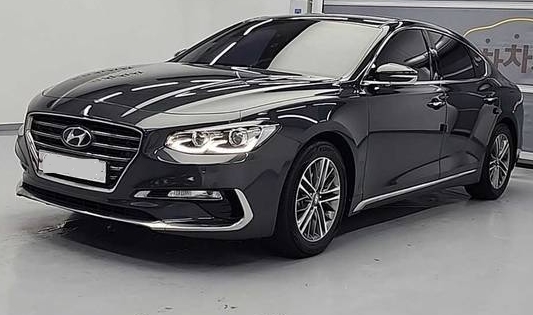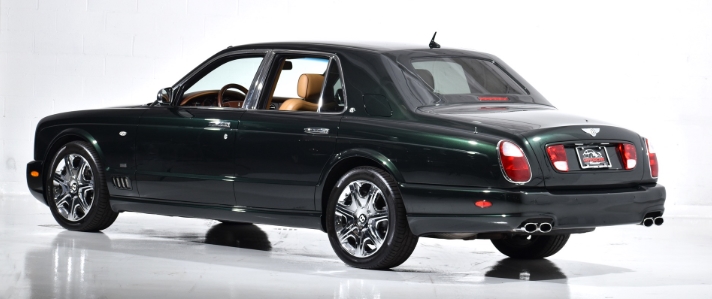The Evolution of the BMW Z8
The BMW Z8 stands as one of the most iconic and celebrated models in BMW’s history, representing a perfect blend of classic design, cutting-edge technology, and exceptional performance. Introduced in the early 2000s, the Z8 captured the imagination of car enthusiasts worldwide and remains a symbol of BMW’s engineering prowess and aesthetic elegance. This article traces the evolution of the BMW Z8, covering its production timeline, models, and trim levels, providing a comprehensive overview of this extraordinary vehicle.
Origins and Concept Development
The BMW Z8’s lineage traces back to the early 1990s when BMW’s design and engineering teams envisioned a modern interpretation of the classic 507 roadster—a legendary model from the 1950s. The project aimed to revive BMW’s reputation in the luxury sports car segment, blending vintage aesthetics with contemporary technology.
The Z8 concept car was unveiled at the 1999 North American International Auto Show in Detroit, creating immediate buzz with its retro-styled yet futuristic design. The concept showcased a sleek, elongated body with pronounced curves, a long hood, and a distinctive front grille reminiscent of classic BMW models.
Following the positive reception, BMW officially announced the production of the Z8 in 1999, with the car entering the market in 2000.
Production Timeline and General Overview
| Year Range | Production Period | Units Produced | Notable Features |
|---|---|---|---|
| 2000–2003 | BMW Z8 (E52) | Approx. 5,700 units | Limited production, hand-built elements, luxury features |
The BMW Z8 was produced over a relatively short period, from 2000 to 2003, with a total of approximately 5,700 units manufactured. Its limited run and hand-crafted quality make it a highly sought-after collector’s item today.
Technical Foundations and Design
The Z8 was built on a modified chassis derived from the BMW E39 5 Series, but extensively reinforced for rigidity. Its design was penned by Henrik Fisker, whose styling emphasized flowing lines and a timeless aesthetic. The car featured a long hood, short rear deck, and classic roadster proportions, emphasizing its sporting intent.
Powertrain specifications included a 4.9-liter V8 engine, which was a significantly refined version of BMW’s M62 engine, tuned to deliver exceptional performance.
Engine and Performance Specifications
- Engine: 4.9-liter (32-valve) V8 engine (BMW S62)
- Power Output: 400 horsepower at 5,600 rpm
- Torque: 371 lb-ft at 4,400 rpm
- 0-60 mph: Approximately 4.7 seconds
- Top Speed: Electronically limited to 155 mph (250 km/h)
The engine’s performance, combined with a lightweight aluminum chassis and advanced suspension, provided an exhilarating driving experience that rivaled contemporary sports cars.
The Models and Trim Levels of the BMW Z8
During its production run, the BMW Z8 was primarily offered as a single, high-end model without multiple trim levels. However, there were notable special editions and options that added exclusivity and customization options.
Standard Features
The standard Z8 was well-equipped, featuring:
- Leather upholstery
- Power-adjustable seats
- Xenon headlights
- Premium audio system
- Aluminum interior trim
- Six-speed manual transmission (standard), with an optional five-speed automatic
Optional Packages and Customizations
While the Z8 did not have multiple trim levels, BMW offered several options and bespoke features that allowed for personalization:
- Individual Customization Program: Buyers could select bespoke paint colors, interior materials, and trim finishes.
- Premium Package: Included features like a premium audio system, heated seats, and upgraded interior trim.
- Concierge and Special Access Services: For select clients, BMW provided exclusive services and event invitations.
Special Editions and Collectible Variants
Although the Z8 was primarily a single-model vehicle, BMW and third-party tuners created special editions and modifications that are noteworthy.
1. BMW Z8 “Alpina” (Rare Customizations)
While Alpina never officially produced a Z8, some enthusiasts and tuners modified Z8s with Alpina-style enhancements, including performance upgrades and bespoke styling details.
2. The Z8 “James Bond” Edition
The Z8 gained additional fame through its appearance in the 2002 James Bond film The World Is Not Enough. While not a factory special edition, this association increased its collectible status.
3. Limited Production Variants
In 2003, BMW produced a small batch of Z8s with unique features, such as special paint colors and interior trims, to mark the end of the model’s production run.
.
RepairSurge Online Repair Manuals Replace Bulky Books With Reliable Digital Information!
Faster And Cheaper Than Traditional Printed Manuals, Users Get Instant Access To The Repair Information They Need For Any Car, Truck, Van or SUV:
.
The End of Production and Legacy
BMW officially ceased Z8 production in 2003, making way for new models and technological advancements. Despite its brief production span, the Z8 left a lasting legacy as a quintessential modern classic.
Influence and Collectability
The Z8’s combination of vintage styling and modern engineering has made it highly desirable among collectors. Its limited numbers, hand-built craftsmanship, and cultural significance—especially its association with James Bond—have contributed to its status as a highly valuable and sought-after vehicle.
Future and Inspiration
The Z8’s design philosophy continues to influence BMW’s modern roadsters and sports cars. Its emphasis on aesthetic elegance paired with performance has set a benchmark for luxury sports cars.
Summary
- Production Years: 2000–2003
- Total Units: Approximately 5,700
- Main Model: BMW Z8 (E52)
- Engine: 4.9L V8 (BMW S62)
- Power: 400 hp
- Performance: 0-60 mph in ~4.7 seconds
- Design: Classic roadster with modern luxury
- Trim Levels: Essentially a single model with optional bespoke features and limited special editions
- Legacy: A timeless classic that remains highly coveted
Conclusion
The BMW Z8 exemplifies a successful synthesis of classic design and modern engineering, making it a milestone in BMW’s history. Its production, limited in scope but rich in impact, cemented its place as an automotive icon. Today, the Z8 stands as a testament to BMW’s craftsmanship and innovation, inspiring future generations of sports cars.







